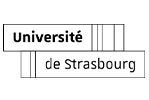What is the place of Fessenheim nuclear power plant in the global industrial emissions in the Grand Canal d’Alsace?
The construction of Fessenheim nuclear power station (operating since 1977) on the Rhine was arised from the presence of a sufficient river flow which avoids building a cooling tower for the nuclear plant. The study consists in comparing the Fessenheim nuclear plant emissions in the Grand Canal d’Alsace to other industries’ emissions (Schiff, 2017) that are located between Basel to Vogelgrun. The effluents from industries may either be treated in urban waste water treatment plant, on-site of the industry, or within an independently operated sewage treatment plant before being release to the water body (EEA, 2019). In all cases, industrial effluents must be treated and regulated (Djelal, 2008) before being released into the Rhine river. In general, the released quantities of controlled pollutants by industries have reduced over time, however it did not prevent the discover of “new substances” in the Rhine river (CIPR, 2019). Therefore, it is justified to also question factors that may have influenced the reduction of Fessenheim nuclear plants pollutants discharged, knowing that the releases are below the limit values. The aim of the study on the evolution of industrial historical releases is to have a better understanding of the impact of Fessenheim nuclear plant on the Rhine ecosystem and the factors that contributed to reduce its impact.




